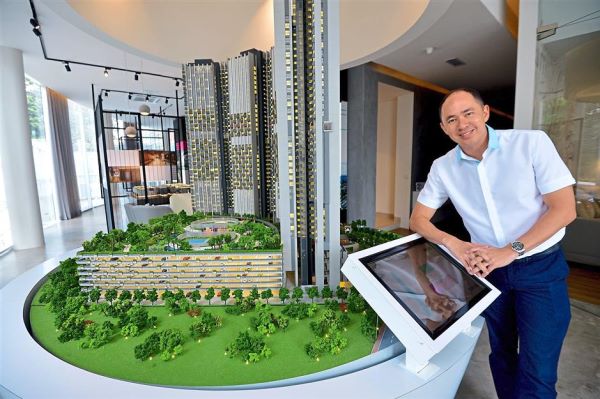Successful property investment can secure lifelong financial security, but the wrong decisions and inaction can impact on your portfolio’s performance.
Mistake 1: Over capitalizing
Renovations can boost a property’s weekly rent and improve its resale value.
Director of Alliance Corp Jason Paetow always encourages his clients to purchase un-renovated properties. He believes once a property has been refurbished, the buyer pays a premium price and has little opportunity to add value.
Yet he warns investors should be conservative when planning a property makeover.
“Unfortunately, a lot of people buy an investment property and rather than looking at it from the point of view of a tenant or resale, they’re thinking as if they’re going to move into it themselves,” he says.
Investors who get emotionally invested in the project may end up with an asset worth less than it cost to buy and renovate, he warns.
Director of Crawford Realty Ryan Crawford reminds investors that renovations need to be profitable.
“It’s important to remember the money you’re spending needs to come back to you at some point,” he says.
People doing up their family home can take renovations to “the next level” to maximise comfort and style, he suggests. But investors need to stay focused on maximising the value of the property at a minimum cost.
Director of Right Property Group Victor Kumar suggests investors ask themselves whether the work is going to increase the value of the property and if it is going to increase the cash flow generated by rent.
Investors may lose money on renovations that do not meet these criteria, he says.
In Mr Crawford’s view, cosmetic renovations tend to deliver the most value.
Painting walls, keeping the garden neat and other minor improvements can allow you to increase the rent without spending a large sum, he says.
Although Todd Hunter from wHereGroup agrees, he believes higher priced homes may be an exception to this rule. In his experience, people renting properties worth more than $600,000 expect their residence to be of the highest quality.
“With high priced properties, you want it to look like your home,” he says.
Mr Hunter also advises investors to renovate when they sell rather than when they buy, outside of small touch-ups.
Doing all the work at the start may net you a higher rent but wear and tear on the property diminishes its sale value, he says.
“If you make the property look its best when you sell, that’s when you have the best chance of capitalising on the best price,” he says.
For first-time renovators, Mr Hunter believes practice makes perfect.
“Most people who do renovations will always say they spent too much on their first property and they learned a tonne of things,” he says.
It’s important to remember the money you’re spending needs to come back to you at some point.
“IT’S IMPORTANT TO REMEMBER THE MONEY YOU’RE SPENDING NEEDS TO COME BACK TO YOU AT SOME POINT.”
Mistake 2: Structuring finances incorrectly
Setting up the right financial arrangements can save you thousands of dollars in interest and fees.
The Reserve Bank has held interest rates at a record low of 2.5 per cent for several months. In this climate, investors may consider reviewing their loan facility to ensure they are getting the best deal.
While it is not always necessary to refinance, it is necessary to shop around, Mr Hunter says.
He suggests investors approach their lender to say, “Another lender is prepared to offer me this. I will be refinancing unless you guys are prepared to drop my interest rate down to where they are”.
If the lender agrees, the investor will get a better rate without having to pay an exit fee, Mr Hunter says.
However, Mr Kumar reminds investors that they need to think beyond just interest rates.
“You need to be looking at it from an investor’s perspective rather than purely interest rates. You need to be looking at the solution,” he says.
This means considering how the lender can help you implement your investment strategy. Some banks’ policies or practices may not align with the investor’s goals, despite temptingly low rates.
The lender may only revalue a property once a year, preventing several quick property purchases in a row. The lender might not take into account renovations or may refuse to lend over a certain threshold, Mr Kumar says.
“Another lender might have a 0.1 per cent higher interest rate but be prepared to lend substantially more money. That opens up options,” he says.
“Rather than just being focused on interest rates, you need to consider from a holistic point of view how the lender will help you achieve your goals.”
Similarly, the way you structure your loans can prevent you losing money.
“Investors do lose a lot of opportunities because they are cross-collateralised in their portfolio,” Mr Kumar says.
If all properties in the portfolio are linked, the lender will want to re-evaluate every property in the portfolio to release equity for another purchase, he advises.
“If you have more of the loans as standalone loans, you can focus on the one property that will give you the best equity to extract the deposit for the next opportunity,” he says.
For rental properties, Mr Paetow suggests setting up a buffer account.
This account, also known as a ‘master facility’, has funds sitting in it to pay for the holding costs of a rental property.
“Unfortunately, most investors go and buy negatively geared properties. If there are holding costs, they pay for it out of their weekly pay packet. It’s just crazy to structure it like that,” he says.
When the costs come from a master facility, the investor is more in control of outgoings and expenses.
To manage your finances as cost-effectively as possible, the experts agree that good advice is essential.
“Having an accountant who is property savvy, who invests in property themselves and not just the share market, is always very helpful,” Mr Hunter says.
Rather than just being focused on interest rates, you need to consider from a holistic point of view how the lender will help you achieve your goals.
“RATHER THAN JUST BEING FOCUSED ON INTEREST RATES, YOU NEED TO CONSIDER FROM A HOLISTIC POINT OF VIEW HOW THE LENDER WILL HELP YOU ACHIEVE YOUR GOALS.”
Mistake 3: Overlooking depreciation
Some investors may be missing out on deductions and thus ultimately paying more tax than necessary.
“A lot of investors we come across out there are not capitalizing on depreciation, probably based on not fully understanding it,” Mr Crawford says.
Depreciation is a tax deduction for the wear and tear on a rental property. While most investors are aware that new properties attract depreciation benefits, older properties can also offer tax write-offs, Mr Crawford says.
Firstly, investors can claim depreciation for properties built after 1987 until the property is 40 years old, according to the Australian Taxation Office (ATO).
Secondly, depreciation of plant and equipment within the property can be claimed, including but not limited to air conditioners, floor coverings, electric items, hot water systems, appliances and kitchen fixtures.
Each of these items has a different “effective life” during which depreciation can be claimed. This time period generally restarts when the item is replaced.
Even accountants occasionally overlook this second category of depreciation at tax time, Mr Paetow says.
He believes the easiest way to extract value from your older property is to have a depreciation schedule drawn up.
“The depreciation companies that do these reports guarantee you’ll always collect more depreciation out of an older property than the cost of a report,” he says.
While depreciation schedules come at a cost, Mr Kumar urges investors not to scrimp on the quality of their service provider.
Some cheap providers will ask you to take your own pictures and base their report on information you provide, he says.
More expensive providers tend to send a qualified person to the property to inspect its condition and draw their own conclusions.
“In my own portfolio, I have tested and measured this,” Mr Kumar says.
“With the online providers, where you do the pictures as opposed to a company that sends someone out, there is a substantial difference in terms of the depreciation that is found that can be used as a tax deduction,” he says.
Investors will get what they pay for when it comes to depreciation benefits, he warns.
Spending with no prospect of return is a waste of resources and investors need to carefully assess all of their outgoings. When it comes to property investment, every dollar should be contributing to building up your long-term wealth.
Investor Profile: Glenn Newberry
Getting it right by mistake
“I first started investing in 1999. Like a lot of people when they start investing, I didn’t really know what I was doing. For me, I started investing because it was a forced way of saving money. I never used to be a good saver but I figured if I bought a property I would have to commit to paying the mortgage.
When I look back now, I can see that I was actually doing some of the right things but it was only by chance – not by experience or knowledge. When I started, I was looking for something that was within five to 15 kilometres of the city. I wanted to make sure that wherever I was buying was in a suburb that had a train line and was close to transport and parks. I was trying to find somewhere that someone would want to rent because it has all the services. I guess from that perspective I was doing the right thing.
One mistake I made was I had negatively geared properties, so I was struggling with cash flow at a couple of points. I wanted to try and sell half to somebody but nobody was interested. So then a friend of mine gave me a book to read, which got me really going in investing, particularly when it comes to smarter investing. I spent a lot of time and money educating myself.
I’ve got 13 properties now and my portfolio is around the $2.7 million mark. The properties are a mix of high cash flow and negative cash flow and growth properties in metropolitan and regional Sydney and Brisbane.”
Source: http://www.smartpropertyinvestment.com.au/spi-plus/beginners-guide/14710-look-before-you-leap









